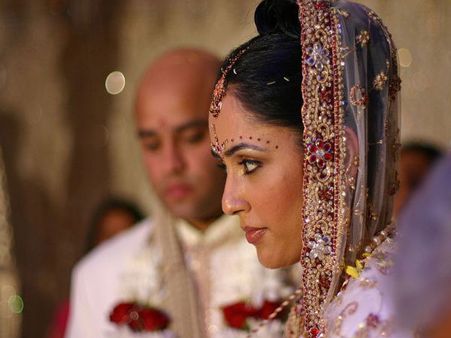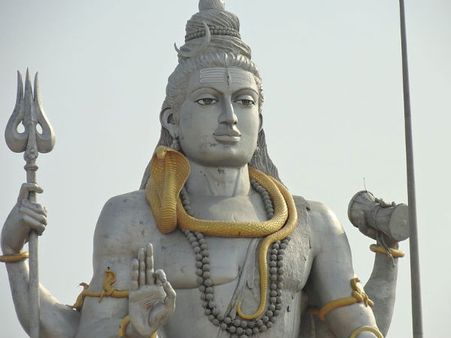Just In
- 3 hrs ago

- 14 hrs ago

- 14 hrs ago

- 18 hrs ago

Don't Miss
- Movies
 Aadujeevitham Box Office Collection Day 28 Prediction: Prithviraj's Movie's Declining Trend Continues
Aadujeevitham Box Office Collection Day 28 Prediction: Prithviraj's Movie's Declining Trend Continues - News
 EVMs-VVPAT Slips 100% Matching Plea: Supreme Court To Pronounce Verdict Today
EVMs-VVPAT Slips 100% Matching Plea: Supreme Court To Pronounce Verdict Today - Sports
 IPL 2024, CSK vs LSG: Marcus Stoinis Records Highest Individual Score in IPL Run Chase
IPL 2024, CSK vs LSG: Marcus Stoinis Records Highest Individual Score in IPL Run Chase - Finance
 Trade Setup: Mixed Results From HDFC Bank, RIL Stall Nifty Momentum; Global Economic Data In Focus
Trade Setup: Mixed Results From HDFC Bank, RIL Stall Nifty Momentum; Global Economic Data In Focus - Technology
 Vivo T3x 5G Goes on Sale in India at 12 noon Today via Flipkart: Check Price, Specs, Offers
Vivo T3x 5G Goes on Sale in India at 12 noon Today via Flipkart: Check Price, Specs, Offers - Automobiles
 Hero Lectro Introduces Muv-e Electric Bike To Transform Delivery Services
Hero Lectro Introduces Muv-e Electric Bike To Transform Delivery Services - Education
 Telangana Inter Manabadi 1st and 2nd Year Results 2024 to be Declared Tomorrow
Telangana Inter Manabadi 1st and 2nd Year Results 2024 to be Declared Tomorrow - Travel
Kurnool's Hidden Gems: A Guide To Exploring India's Lesser-Known Treasures
Significance Of Wearing Bindis
Wearing bindis have always formed a part of traditional fashion in India. Even with the advent of modernisation and influence of Western culture, the fascination for wearing bindis among women has not reduced. In fact, time and again bindis keep trending over the years. Moving on from the traditional bindis, the fancy bindis are now a craze among young girls and married women as well.
Interestingly, wearing bindis has great spiritual significance and health benefits too. The 'Bindi' literally means a drop in Sanskrit. A bindi is worn on the central part of the forehead, between the two eyebrows which is a major nerve point of our body. A traditional bindi is supposed to be a big red dot in the middle of the forehead with a substance called 'kumkum'. Kumkum is made of dried and powdered turmeric or saffron with a bit of slaked lime which thus gives it the red colour.
Read on to find out more about the significance of wearing bindis.

Effect Of Bindi On Health
Wearing a bindi has huge health benefits. Traditional bindis with kumkum, made of saffron was said to be an excellent cure for headaches. It also helps to keep the head cool and protects loss of energy.

Spiritual Significance
The area in which the bindi is applied is between the eyebrows where the Ajna chakra is located. According to Hinduism, it is the point where the soul is said to enter or exit the body. It is also the point of concentration which gets easily heated at times of stress and anxiety. Applying a bindi on the forehead has a cooling effect on the nerves, at this point.

Relation With Shiva
A bindi is also said to represent the 'Third Eye' of Lord Shiva. It is believed that our spiritual eye is located at this point.

Sign Of Marriage
Bindi is generally seen as the mark of a married woman. However, unmarried girls especially in South India also wear bindis. A bindi is generally red in colour which represents honour, love and prosperity. Hence, it is compulsory for married women to wear bindis. Widows on the other hand are not supposed to wear bindis.

Traditional Way Of Wearing Bindi
A traditional bindi is always red or maroon in colour. A pinch of kumkum is applied skillfully at the mid part of the forehead using the fingertip or with a small stick. It is made into a perfect round shape. The bindi can either be applied with kumkum or sandalwood paste. However, nowadays women prefer to wear the stick-on ready made bindis.

Modern Use
Bindis have now become a style statement. It is no more confined to married or old women. Neither it is now restricted to a particular colour or shape. It is available in various shapes and patterns which has in a way helped to keep the tradition of wearing bindis alive.
-
 insync100 Popular Hindu Baby Names For Girls And Boys That Start With The Letter M
insync100 Popular Hindu Baby Names For Girls And Boys That Start With The Letter M -
 yoga spiritualityWhen Is Magh Pradosh Vrat 2024? Date, Shubh Muhurat, Puja Vidhi, Mantra, And Remedies Related To Lord Shiva
yoga spiritualityWhen Is Magh Pradosh Vrat 2024? Date, Shubh Muhurat, Puja Vidhi, Mantra, And Remedies Related To Lord Shiva -
 yoga spiritualityFebruary 2024 Festival List: Check Full List For Indian Festivals And Vrats
yoga spiritualityFebruary 2024 Festival List: Check Full List For Indian Festivals And Vrats -
 yoga spiritualityPaush Purnima 2024 Remedies: Try These Upay For Peace, Prosperity, Money And Happiness In Life
yoga spiritualityPaush Purnima 2024 Remedies: Try These Upay For Peace, Prosperity, Money And Happiness In Life -
 yoga spiritualityWhen Will Pran Pratishtha Happen In Ayodhya Ram Mandir? Significance Of Pran Pratishtha In Hinduism
yoga spiritualityWhen Will Pran Pratishtha Happen In Ayodhya Ram Mandir? Significance Of Pran Pratishtha In Hinduism -
 yoga spirituality‘Saat Phere' Mandatory In Hindu Marriage, Rules Allahabad Court: Know Meaning Of 7 Pheras (Auspicious Rounds)
yoga spirituality‘Saat Phere' Mandatory In Hindu Marriage, Rules Allahabad Court: Know Meaning Of 7 Pheras (Auspicious Rounds) -
 yoga spiritualityTulsidas Jayanti 2023: Date, History, Significance, And Celebrations
yoga spiritualityTulsidas Jayanti 2023: Date, History, Significance, And Celebrations -
 yoga spiritualityNuh Violence In Haryana: Importance Of Religious Procession In Hinduism, What The Indian Constitution Says
yoga spiritualityNuh Violence In Haryana: Importance Of Religious Procession In Hinduism, What The Indian Constitution Says -
 yoga spiritualityHindu Temples - Know The Spiritual Significance And Symbolism
yoga spiritualityHindu Temples - Know The Spiritual Significance And Symbolism -
 yoga spiritualityVadapalli Narasimha Swamy Temple, Nalgonda: Where The Lord's Breath Is Felt!
yoga spiritualityVadapalli Narasimha Swamy Temple, Nalgonda: Where The Lord's Breath Is Felt! -
 yoga spiritualityEka Sloki Ramayanam: Meaning And Benefits Of Reading The Ramayana In One Shloka!
yoga spiritualityEka Sloki Ramayanam: Meaning And Benefits Of Reading The Ramayana In One Shloka! -
 yoga spiritualityNavabrindavanam - History And Significance Of The Tombs of The Nine Saints!
yoga spiritualityNavabrindavanam - History And Significance Of The Tombs of The Nine Saints!


 Click it and Unblock the Notifications
Click it and Unblock the Notifications



